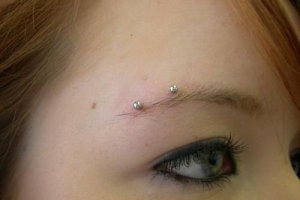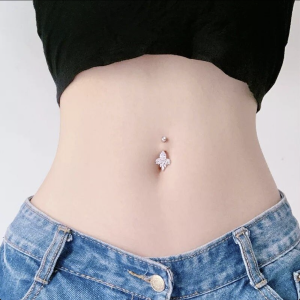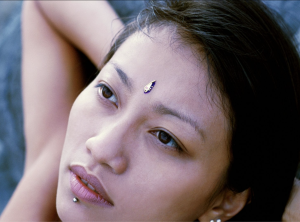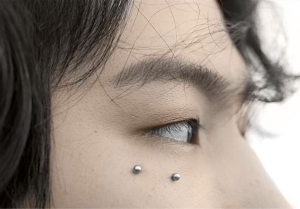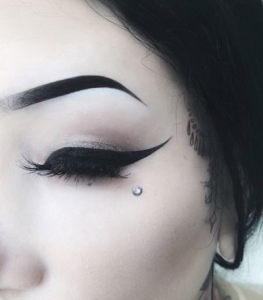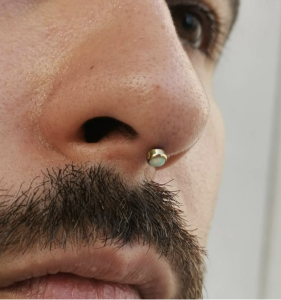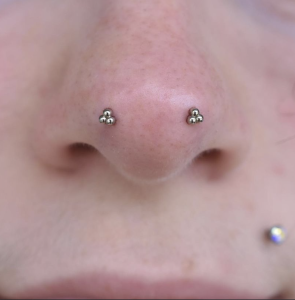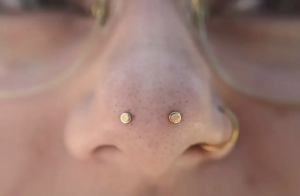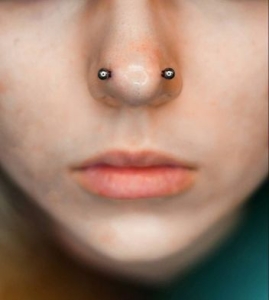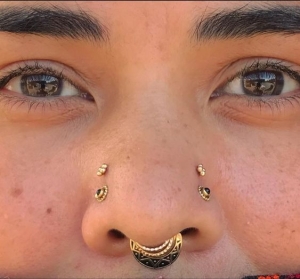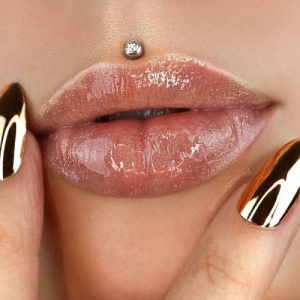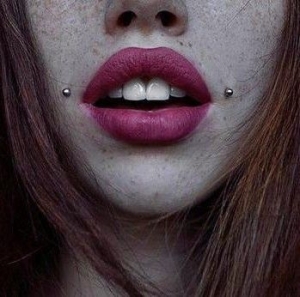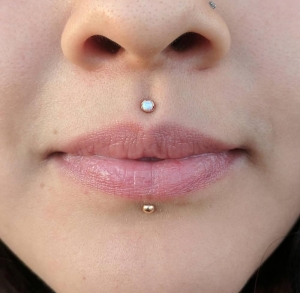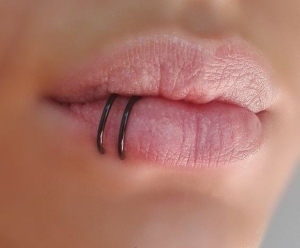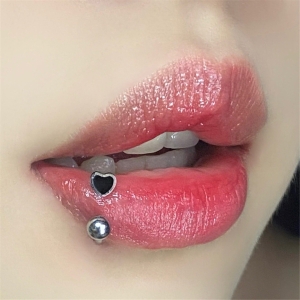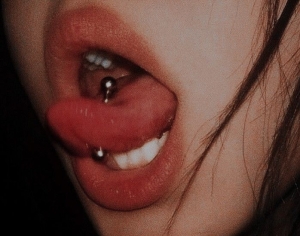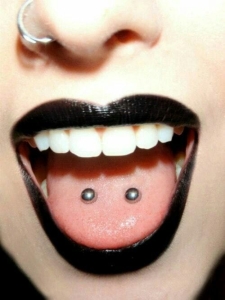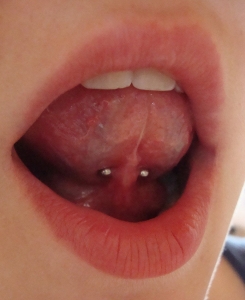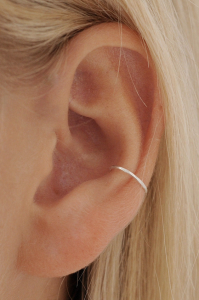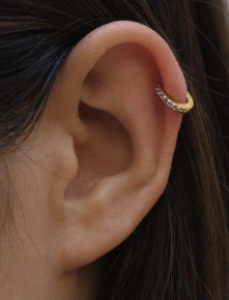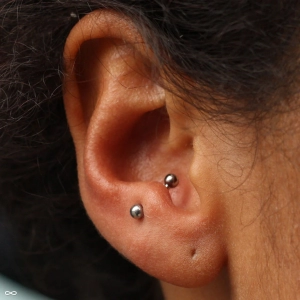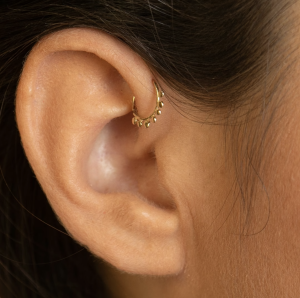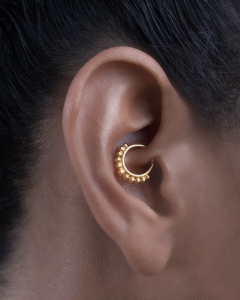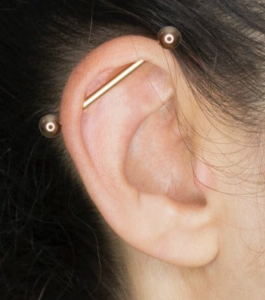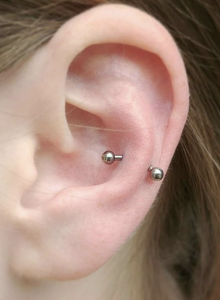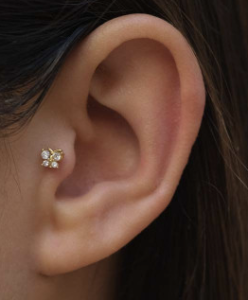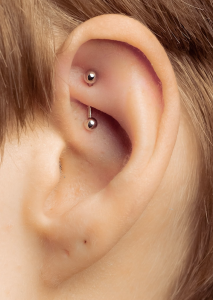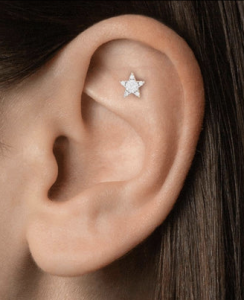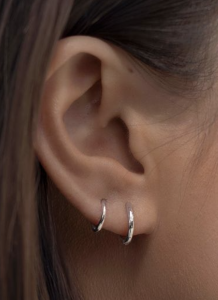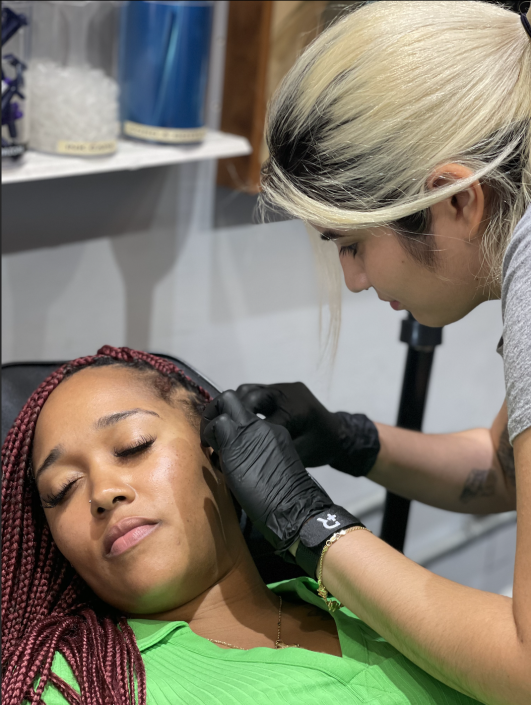What to expect:
Here at Inked Life Miami we do a variety of piercings by professional artists. We do a range of piercings including conch, tragus, anti-tragus, helix, bridge, nose, septum, medusa, navel, nipple and more! Clients can either start off a piercing with our standard surgical steel jewelry (included in the piercing price), or purchase a piece of specialty jewelry from the shops inventory (sold separately). Inked Life Miami stocks gold and titanium simple specialty jewelry, and others with designs to fit any aesthetic you’re looking to achieve with piercings. Whether you’re looking to give off Lana del Rey vibes, punk, or hipster, Inked Life Miami has it all.
All piercings are done using single-use, sterilized needles for each client. We prioritize the health and safety of our clients and follow strict sterilization procedures. Our staff is knowledgeable and experienced in aftercare, ensuring that your piercing heals properly. Come visit us at Inked Life Miami for your next piercing!
Types of piercings:
Vertical Eyebrow:
An eyebrow piercing is a type of body piercing that is located above or below the eyebrow, typically on the outer edge of the eyebrow. It is a popular piercing that can be worn with a variety of jewelry styles, including curved barbells, captive bead rings, and circular barbells.
The piercing process involves using a sterilized needle to create a small hole in the skin above or below the eyebrow, and then inserting a piece of jewelry through the hole. The jewelry is then secured in place by a small ball or bead that is attached to the ends of the jewelry.
Horizontal Eyebrow:
Horizontal eyebrow piercing, also known as a horizontal eyebrow surface piercing, is a type of body piercing that involves inserting a piece of jewelry horizontally through the skin of the eyebrow. This type of piercing is typically done using a curved needle and a straight barbell or surface bar.
Navel:
A navel piercing is a type of body piercing that is located in the skin around the belly button. It is a popular piercing that can be worn with a variety of jewelry styles, including curved barbells, captive bead rings, and circular barbells.
The piercing process involves using a sterilized needle to create a small hole in the skin around the navel, and then inserting a piece of jewelry through the hole. The jewelry is then secured in place by a small ball or bead that is attached to the ends of the jewelry.
Third Eye:
A third eye piercing is a type of body piercing that is located on the forehead between the eyebrows, in the area sometimes referred to as the “third eye.” This piercing is also known as a “bindi” piercing, as it is often adorned with a decorative gem or piece of jewelry similar to the traditional bindi worn in some cultures.
The piercing process involves using a sterilized needle to create a small hole in the skin between the eyebrows, and then inserting a piece of jewelry through the hole. The jewelry is then secured in place by a small ball or bead that is attached to the ends of the jewelry.
Cheek:
Cheek piercing is a type of body piercing that involves inserting jewelry through the cheek. The piercing is usually done on the outer area of the cheek, with the jewelry passing through the skin and exiting through the mouth. The piercing can be done on one or both cheeks and can be adorned with various types of jewelry, such as studs, rings, or barbells.
Anti-eyebrow:
An anti-eyebrow piercing, also known as a teardrop piercing, is a type of facial piercing that is placed just below the eye, typically on the cheekbone. The piercing can be done on one or both sides of the face and is often adorned with small, delicate jewelry such as a curved barbell or a small surface bar.
Dermal:
Dermal piercings, also known as microdermal piercings or single-point piercings, are a type of body modification that involves placing a small anchor beneath the skin and attaching decorative jewelry to the exposed end of the anchor.
Dermal piercings can be placed on various parts of the body, such as the neck, chest, back, and hands, and can be used to create unique and visually striking designs. They are often chosen for their versatility and longevity, as they can last for several years with proper care.
Septum:
The septum piercing is a type of body piercing that is located in the thin strip of skin in the center of the nose, called the septum. It is a popular piercing that can be worn with a variety of jewelry styles, including captive bead rings, horseshoe rings, and circular barbells.
The piercing process involves using a sterilized needle to create a small hole in the septum, and then inserting a piece of jewelry through the hole. The jewelry is then secured in place by a small ball or bead that is attached to the ends of the jewelry.
Bridge:
A bridge piercing is a type of body piercing that is located horizontally through the skin of the bridge of the nose, between the eyes. It is also sometimes referred to as an “Erl piercing” or a “earl piercing.”
The piercing typically involves using a sterilized needle to create two small holes in the skin of the bridge of the nose, and then inserting a piece of jewelry through the holes. The jewelry can be a variety of styles, such as a curved barbell or a straight barbell.
Nose Studs:
A nose stud is a type of body jewelry that is designed to be worn in a nose piercing. It is a small piece of jewelry that is inserted into the nostril and secured in place by a small backing.
Nose studs can be made from a variety of materials, such as gold, silver, stainless steel, or titanium. They come in many different shapes and styles, including studs with gemstones, flowers, or other decorative elements.
Nose studs are a popular form of body jewelry and are often worn as a fashion statement or a form of self-expression. Some people choose to wear a nose stud to reflect their cultural or religious traditions, while others wear them simply because they like the way they look.
Septril:
A septril piercing is a rare and unique type of nose piercing that combines a rhino piercing and a septum piercing. It involves a vertical piercing through the inside of the septum, starting from the bottom of the nose and ending at the tip of the nose.
To get a septril piercing, one would need to first pierce their septum and gradually stretch it over time with the assistance of a professional piercer. This process can take several months or even up to a year before the septum is ready for the septril piercing.
Austin Bar:
The Austin bar piercing involves a horizontal bar that passes through the tip of the nose, resulting in a small bead-like appearance on either side. Unlike a nasallang piercing, this type of piercing avoids piercing the cartilage or nasal cavity, and does not go through the nostrils themselves. Typically, a short straight barbell is used for the piercing, and to reduce the risk of migration, most piercers use a 16G or 14G needle. Although the piercing process can be quite painful, it typically heals within approximately two months.
Mantis:
A mantis piercing is a double piercing where two holes are made using a cannula needle in each nostril near the tip of the nose. Afterwards, a stud is inserted perpendicularly into each nostril, creating a front-facing piercing. The healing process of a mantis piercing usually takes about six months, but if proper aftercare is not taken and the piercing becomes infected, it may take a longer time to heal.
Nasallang:
A tri-nasal piercing, also known as a nasallang piercing, involves passing through the right nostril, septum, and left nostril. It is executed in one go by piercing through all three nose parts and is typically performed using a 16 gauge or 14 gauge needle. Due to its intricate nature, the healing period for a nasallang piercing can last between 6-12 months as it passes through a significant amount of cartilage.
High-nostril:
The high nostril piercing is a trendy nose piercing that is situated higher on the nose and closer to the nose bridge than a typical nostril piercing. This placement creates a unique and edgy look that can add a touch of individuality to anyone’s style. However, due to the location of the piercing, it may take longer to heal than a regular nostril piercing, usually ranging from 4-6 months.
There are two popular variations of the high nostril piercing: the single or one-side piercing and the double piercing. The single high nostril piercing is a simple yet bold statement piece that stands out on its own. On the other hand, the double high nostril piercing is a more complex look that adds an additional level of interest and symmetry to the face.
Labret:
A labret is a type of body piercing that is typically located on the bottom lip, just below the center. It is also sometimes referred to as a “lower lip piercing.” The piercing typically involves a small piece of jewelry, such as a stud or a hoop, which is inserted through the skin of the lip.
Medusa:
A Medusa piercing is a type of body piercing that is located in the center of the upper lip, just above the philtrum (the small groove between the nose and upper lip). It is also sometimes called a “philtrum piercing” or a “cupid’s bow piercing.”
The piercing typically involves using a sterilized needle to create a small hole in the center of the upper lip, and then inserting a piece of jewelry through the hole. The jewelry can be a variety of styles, such as a stud or a hoop.
Jestrum:
Jestrum piercing, also known as vertical medusa piercing, is a type of lip piercing that involves a vertical piercing through the philtrum (the indentation in the center of the upper lip) with a curved barbell jewelry. The piercing passes through the philtrum and exits through the center of the upper lip.
Dahlia:
The Dahlia piercing, which is a type of lip piercing, is sometimes referred to as a Joker piercing due to its resemblance to the iconic scars of the comic book supervillain. It is considered one of the less common lip piercings.
This piercing involves the placement of a labret stud through each corner of the mouth, as close to the corners as possible. This positioning creates a lengthening effect and emphasizes the corners of the mouth.
It’s named after the story of Elizabeth Short, an actress that was murdered in the 1940s and left with a smile carved into her face. She was later nicknamed “The Black Dahlia,” hence the name and placement of the piercing.
Cyber Bites:
Cyber bites are a type of lip piercing that involves two piercings placed on either side of the upper lip, similar to snake bites or spider bites. However, unlike those piercings, cyber bites are typically placed closer to the center of the lip, creating a symmetrical look.
The name “cyber bites” may be inspired by their futuristic or edgy appearance, as well as the placement of the piercings near the mouth, which can create a resemblance to a cybernetic interface.
Snake Bites:
Snake bites are a type of lip piercing that involves two piercings placed on either side of the lower lip, creating a symmetrical appearance similar to the fangs of a snake. This piercing style has become increasingly popular in recent years and is often seen as a bold and edgy choice.
The placement of the snake bites can vary slightly, with some people opting for a closer or wider distance between the piercings depending on their personal preference. The jewelry used for snake bites can also vary, with common choices including rings, studs, or barbells.
Angel Bites:
Angel bites are a type of facial piercing that involves two symmetrical piercings placed on the upper lip, one on each side of the philtrum (the indentation in the center of the upper lip). They are also sometimes referred to as “double Madonna” piercings, as they resemble two Madonna piercings (single piercings on either side of the philtrum) placed close together. Angel bites can be performed using various types of jewelry, including studs, rings, and labrets.
Spider Bites:
Spider bites piercing is a type of lip piercing that involves two piercings close together on the lower lip. The piercings are typically located on either side of the lip, giving the appearance of a spider bite. The jewelry used for spider bites piercing can vary, but is usually a small, stud-like piece of jewelry such as a labret or a lip ring.
Spider bites piercing is a popular choice for those looking for a subtle, yet edgy piercing. It is suitable for individuals of all genders and can be a great way to add a bit of personality to your look.
Side Lip:
A side lip piercing, also known as a horizontal lip piercing, is a type of lip piercing that is placed horizontally through the lower lip. The piercing typically enters and exits the lip on one side, creating a unique and edgy look. This piercing is usually done with a small barbell or curved barbell jewelry.
Canine Bites:
The piercing style called canine bite piercing gets its name from its placement, which is near the canines in the lower lip. It’s a combination of angel bite and spider bite piercings and offers a wide range of jewelry options due to the multiple piercings involved.
Various jewelry styles such as hoop types like captive bead rings and seamless rings, circular barbells, or flat back labret studs can be worn in each piercing. It’s exciting to mix and match these jewelry styles in canine bite piercings.
Tongue:
A tongue piercing is a type of body piercing that involves inserting jewelry through the tongue. The piercing is typically done through the center of the tongue and can be adorned with various types of jewelry, such as a barbell or a captive bead ring.
Venom Piercing:
A venom piercing is a type of double tongue piercing that is sometimes referred to as a frog eye piercing due to the ball-shaped jewelry resembling the eyes of a frog when the mouth is opened. The most commonly used jewelry for venom piercings are straight barbells, which have ball ends that screw into place at both the entry and exit points. When getting an initial piercing, the barbell used should be long enough to allow for swelling. Venom piercings are a unique and bold variation of the traditional tongue piercing that can help you make a statement. They are suitable for individuals of all genders and the procedure typically takes a relatively short amount of time. Healing time for venom piercings can vary, but generally takes around 4 to 8 weeks to fully heal.
Tongue Frenulum:
Tongue frenulum piercing refers to the act of creating a small hole in the frenulum of the tongue for the purpose of inserting jewelry or a barbell. This type of piercing is also known as a tongue web piercing or frenulum linguae piercing. While tongue frenulum piercings are not as common as some other types of body piercings, they have gained popularity among people who want a unique and different way to express themselves.
Smiley:
A smiley piercing is a type of oral piercing that involves inserting a piece of jewelry, typically a small hoop or captive bead ring, through the thin piece of tissue that connects the upper lip to the gums (known as the frenulum). When the person smiles, the jewelry is visible and can create the appearance of a “smiley face,” hence the name. Smiley piercings are sometimes also referred to as “lip frenulum piercings.”
Conch:
A conch piercing is a type of ear piercing that goes through the cartilage of the ear in the innermost part of the ear, known as the conch. It can be done on either the outer or inner conch, and can be a single or double piercing. Conch piercings are popular because they offer a unique and stylish look, and can be adorned with a variety of jewelry such as studs, hoops, and captive bead rings.
Helix:
A helix piercing is a type of ear piercing that goes through the upper, outer edge of the ear cartilage. It is a popular form of body art and can be adorned with a variety of jewelry such as studs, hoops, and barbells.
The piercing process for a helix piercing involves using a sterilized needle to create a small hole in the cartilage of the ear. The procedure can be painful and may take longer to heal than other ear piercings, as it involves piercing through cartilage rather than just skin.
There are different types of helix piercings, including single, double, and triple helix piercings. The position and angle of the piercing can also vary depending on personal preference and ear anatomy.
Anti-tragus:
An anti-tragus piercing is a type of ear piercing that goes through the cartilage of the ear opposite to the tragus, in a small protruding section of cartilage just above the earlobe called the antitragus. It is a less common type of ear piercing, but can be a unique and stylish addition to one’s ear jewelry collection.
The piercing process for an anti-tragus piercing involves using a sterilized needle to create a small hole in the cartilage of the ear. It can be a more painful piercing as it involves piercing through thicker cartilage. An anti-tragus piercing can be adorned with a variety of jewelry, such as studs, hoops, and captive bead rings.
Forward Helix:
The forward helix is a small area of cartilage located at the top front of your ear, opposite to the traditional helix. This type of piercing has become increasingly popular due to its edgy and youthful appearance, and can be incorporated into multiple piercings. However, it’s important to note that the healing process for a forward helix piercing typically takes a minimum of 3 to 6 months..
Daith:
A daith piercing is a type of ear piercing that is located on the innermost fold of cartilage in the ear, just above the ear canal. It is a relatively new type of piercing that has gained popularity in recent years.
The daith piercing is usually done with a small gauge needle, and a piece of jewelry, such as a curved barbell or a captive bead ring, is inserted into the piercing. It may take longer to heal than a standard earlobe piercing, and may require special aftercare instructions.
Some people believe that a daith piercing can help alleviate migraines, as it is believed to be a pressure point that is connected to the nervous system.
Industrial:
An industrial piercing is a type of ear piercing that involves two piercings connected by a single piece of jewelry. It typically consists of a vertical piercing of the cartilage near the top of the ear, and a second piercing on the forward helix of the ear.
The two piercings are connected by a single straight barbell, which runs horizontally through the ear. The industrial piercing is a more advanced and less common type of ear piercing than the traditional earlobe piercing.
Snug:
Snug piercings, also known as anti-helix piercings, are not recommended for those who are not prepared for a more intense piercing experience. It is widely regarded as the most painful type of cartilage piercing, and some consider it to be the most painful piercing overall. The snug piercing is located at the top of the anti-tragus and is inserted through a specific area called the anti-helix, which is situated between the rim of your ear and the inner cartilage. Moreover, it is not a universal piercing, as the shape of your ear might not be suitable for it. Snug piercings share a similar healing time with other cartilage piercings, which takes around four to six months.
Tragus:
A tragus piercing is a type of ear piercing that is located on the small, triangular flap of cartilage that covers the opening of the ear canal, called the tragus. It has become increasingly popular in recent years, particularly among those looking for a more unique and edgy look.
The tragus piercing is usually done with a small gauge needle, and a piece of jewelry, such as a stud or a hoop, is inserted into the piercing. It is a relatively quick and easy piercing procedure, and the healing time is typically around 4 to 6 weeks.
Rook:
Rook piercings are a relatively recent addition to the world of piercings. They are located in the cartilage fold situated just below the rim or helix of the ear and can look charming both alone or as part of a cluster of cartilage piercings. Despite its location in a tight spot, there is a wide range of rook piercing jewelry available to personalize your piercing. However, the rook piercing can take anywhere from 6 to 9 months, or up to a full year, to fully heal.
Flat:
The flat piercing is situated in the flat cartilage area between the upper rim of the ear (helix) and the cartilage flap where the rook piercing is located. Due to its spacious placement, it offers ample opportunities for unique piercing configurations. It looks stunning as a standalone piercing or when combined with other cartilage piercings, such as the forward helix or auricle. However, it’s crucial to note that the healing time for the flat piercing typically takes a minimum of 6 months and could take as long as 9 months to a year.
Lobe:
The lobe piercing is typically done using a small gauge needle, usually 20G. However, if you plan on stretching your lobes, you can opt for an 18G needle. Since the gauge is small, you will need jewelry specifically made for lobe piercings. Fortunately, due to the popularity of lobe piercings, there are numerous styles of jewelry available to choose from.
The healing time for lobe piercings is relatively short, typically taking around 6-8 weeks to heal completely. However, it’s essential to take proper care of the piercing during this period to ensure it heals correctly and avoid any complications.



